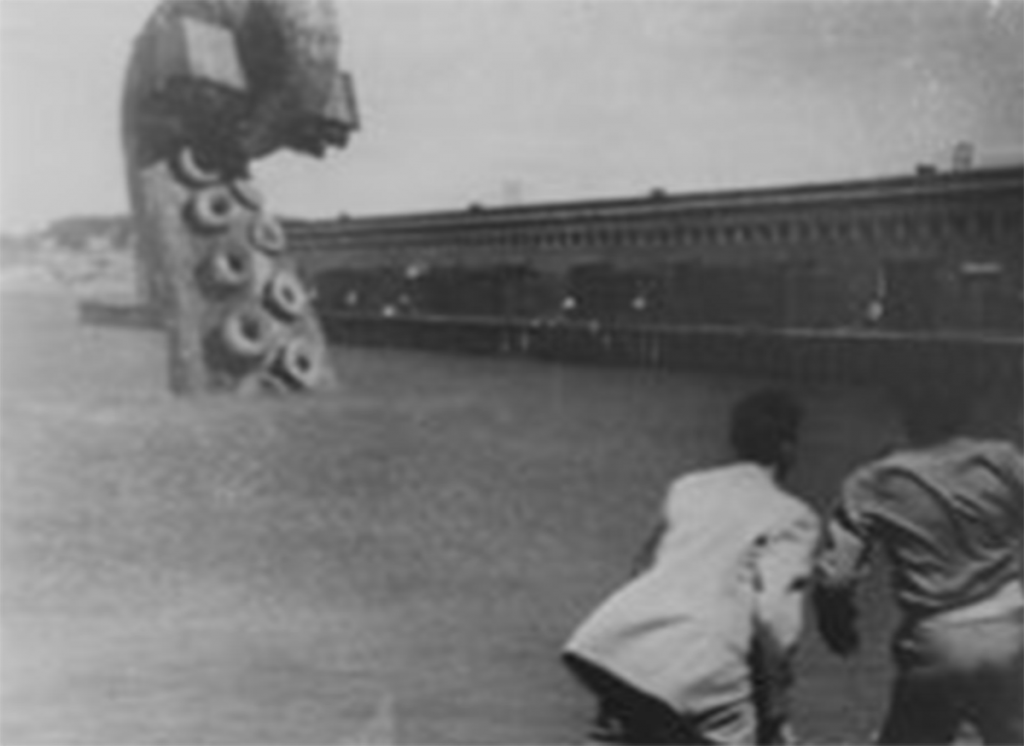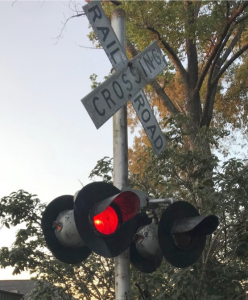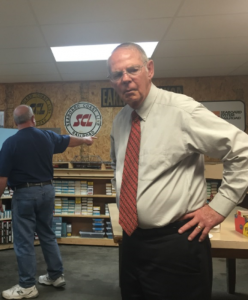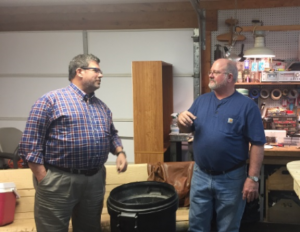Various HO scale freight and passenger cars. Most with Kadee or compatible couplers. Contact Bill Thomas, 270-339-9482, for a detailed list. Examples below.
Category: Bill Thomas
I caught this CSX unit coal train at Warrior Coal’s loading facility west of Madisonville, February 3, 2020. I was coming off a school bus route (empty) on the west side of the county. Thus the limited angle and distance from the train. Get coal train pictures while you can! – Photos by Bill Thomas
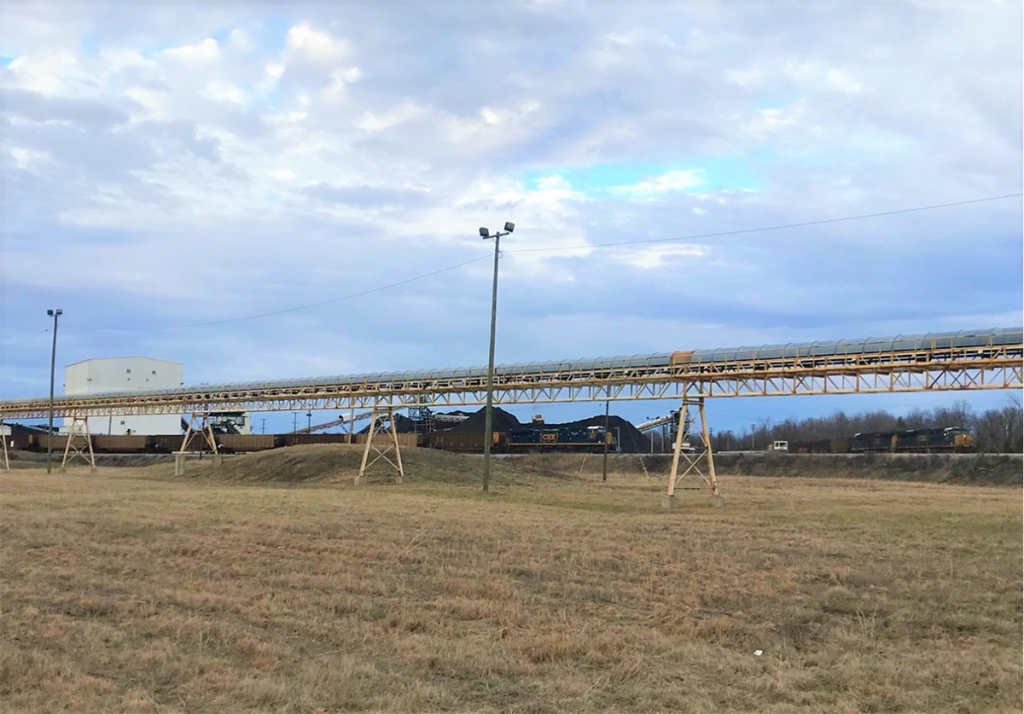
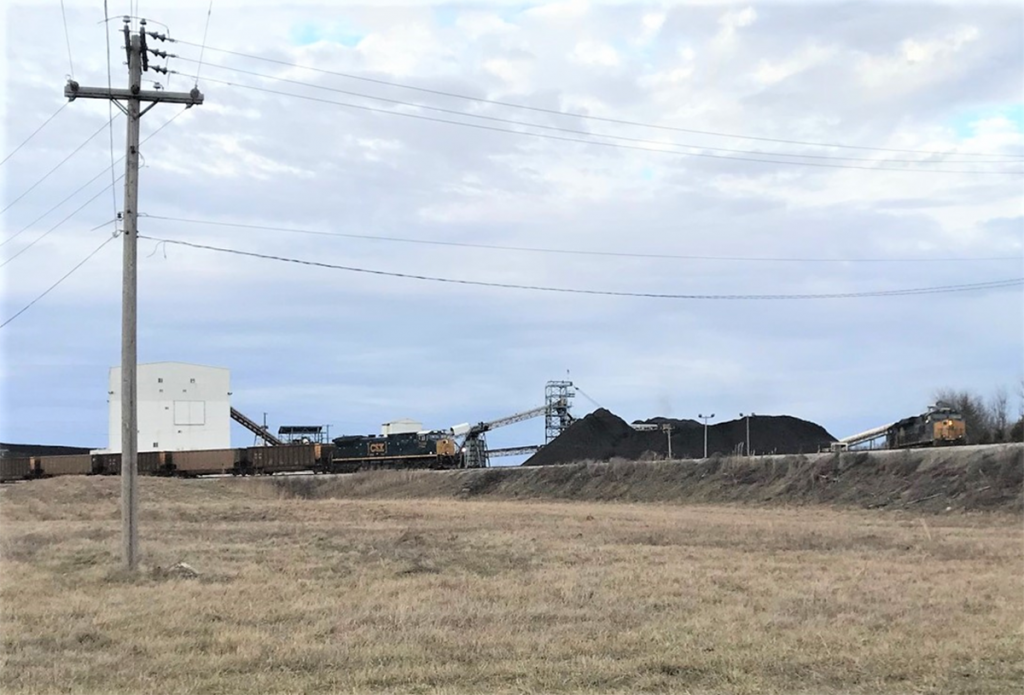
The Hook Line & Singer Garden RR got some needed track work after a long period of deferred maintenance due to budget cuts! Tie replacement was a priority for the short line. – Bill Thomas
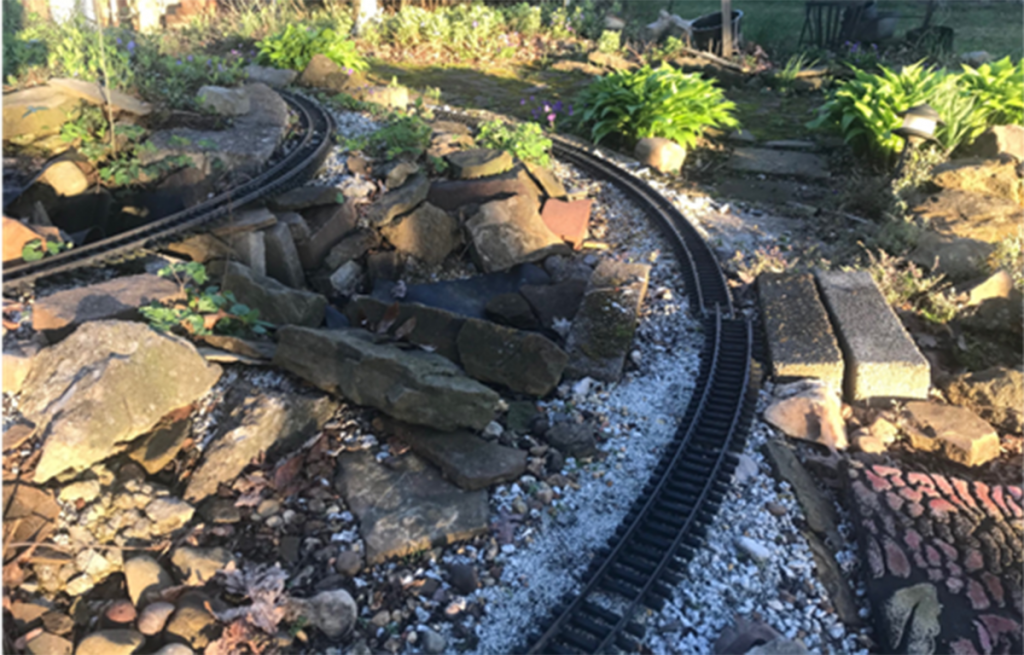
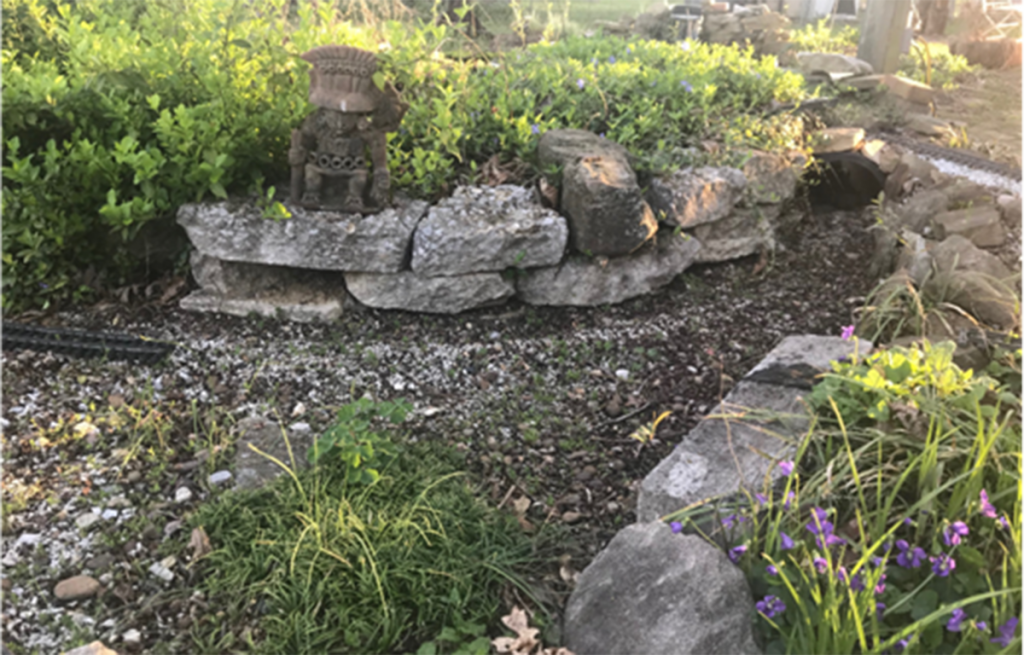
by Bill Thomas, editor
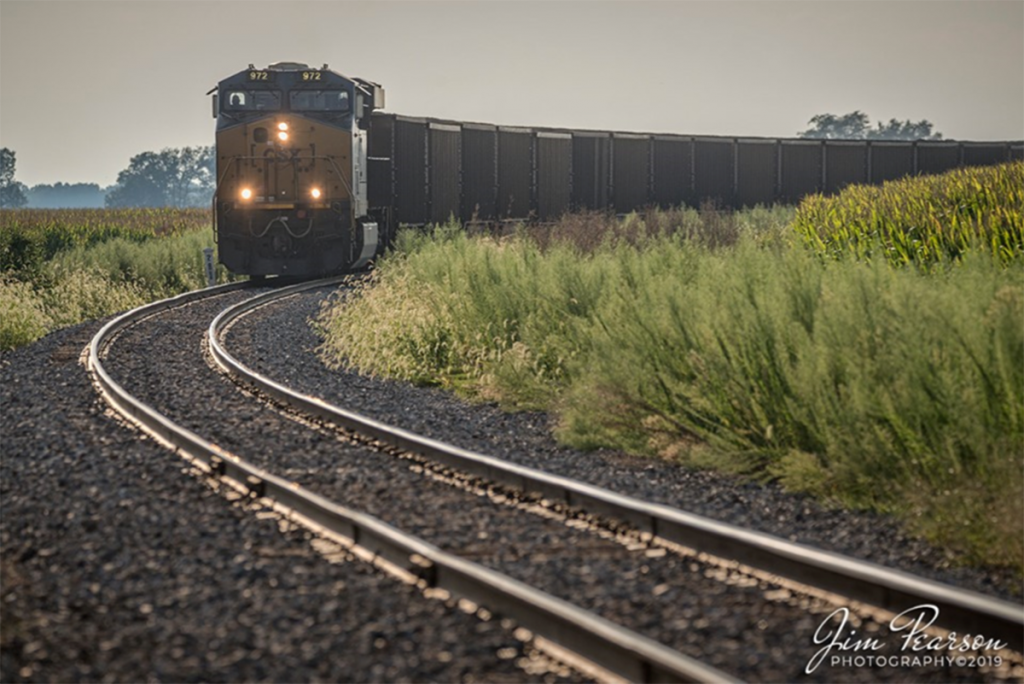
For 16 years now, I’ve watched the Morganfield branch (or what’s left of it to Dotiki Mine) host hundreds of coal trains bringing the powerful mineral topside to help power our country. Little did I know that when that last train rolled out from under the tipple it would signal the end of a 52-year stretch of mining in one facility. I was 4 years old when they started.
Since the late Dennis Carnal took me on a tour of western Hopkins and Webster counties almost 15 years ago, I’ve been fascinated with history of mining that contributed to the success of the branch from Madisonville to Diamond. Now as I drive school buses in the area and cross it at Happy Lane, Columbia School House Rd, Bernard St., Schmetzer’s Crossing, and SR 814, in see rust collecting on the shiny rails. The stacks of old ties bundled for re-use at home & garden centers and landscaping companies, the brand new asphalt crossings mentioned above speak of the volatile and often unexpected turns made in the coal industry these days.
No matter the reason, dirty coal, economic imbalance, or the continued battle against the coal industry in general, the trains are gone and now I wish I’d ventured out and taken more pictures. How we are lulled by the continuous sight of the passing train – thinking, “I’ll catch it next time when the weather is better or I have more time or when the light is better – or when I have my good camera instead of my iPhone.”
But, the great thing about being in a group like The Western Kentucky Chapter of the National Railway Historical Society is we are closely connected with those who often carry a good camera and are purposeful about getting those treasured photos. So here’s my tribute to those in the chapter who get the shots – good light or bad. Thank you for sharing your work on our website and social media outlets. Thanks for burning the gas and taking the time so the rest of us can enjoy the memories.
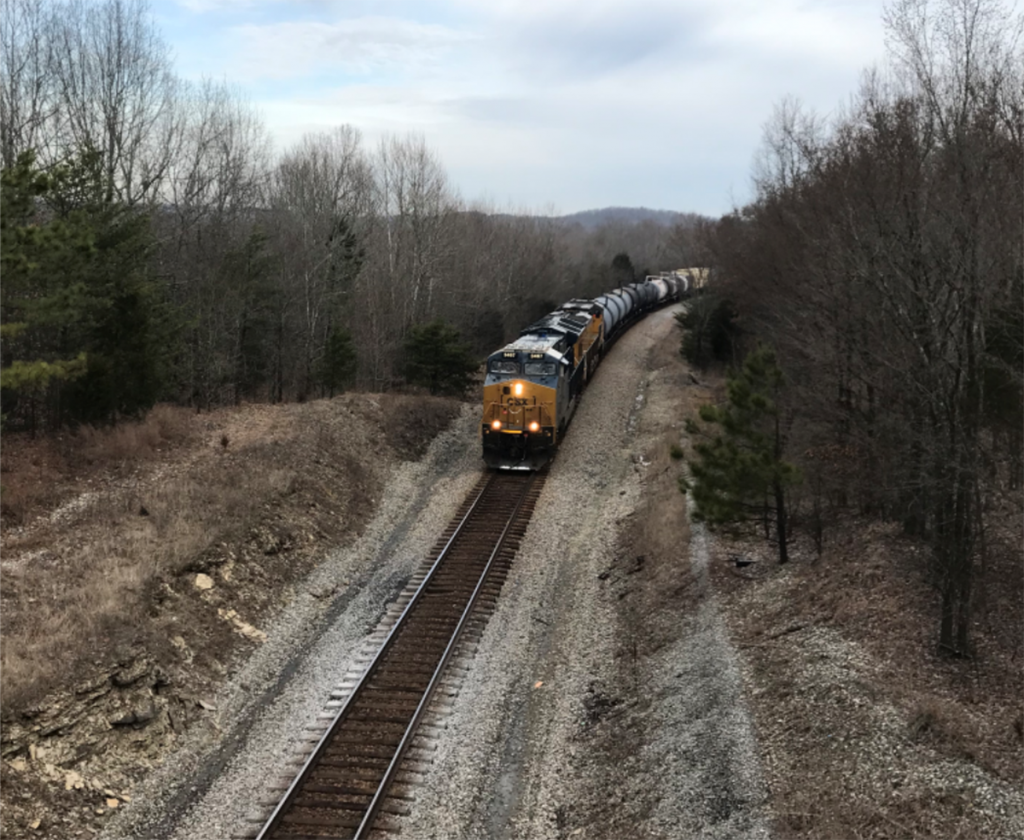
Bill Thomas got this view of a south bound CSX freight at Mannington, Ky.
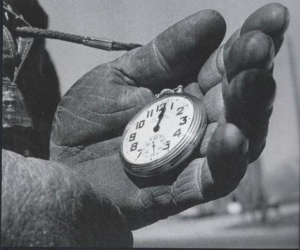 Today we all begin “Standard Time.” Actually, it started early this morning at 2AM when we were all supposed get up and move the clock back one-hour, gaining an extra hour of sleep. To my knowledge, no one got up at 2AM.
Today we all begin “Standard Time.” Actually, it started early this morning at 2AM when we were all supposed get up and move the clock back one-hour, gaining an extra hour of sleep. To my knowledge, no one got up at 2AM.
Railroads have always functioned by the clock. All operating personnel, enginemen, conductors, brakemen, dispatchers, maintenance of way folks, and others all need to function precisely, on the same time. Over the years railroads spent a fortune assuring every pocket watch worn by a railroader was accurate, to the second. Watch repairmen were under contract to provide this service. Rail management despised Daylight Savings Time as it meant changing their passenger schedules, among other things. (Only farmers were less happy with DST)
Railroaders timepieces, timetable, and special instructions kept trains from running into each other. This was in the days prior to the computer screen now in view of the engineer and conductor as they glide along their way. They can now communicate in real time with the dispatcher, coordinating meets, and change strategies in order to expedite their cargo.
- S. Railroads did the country a great service in 1883 when, on their own, no governmental involvement, established our four time-zones. Fifty-Six standards of time were folded into the four zones we set time by today. Only minor tweaking has altered the original map, mostly to enhance economic zones. Photo by the late Richard Steinheimer.
Gary O. Ostlund
Although it’s not a railroad-related photograph, I thought it interesting. On an unusually foggy morning I arrived at the “bull pen” where several Hopkins County buses await their “engineers” to pull them out of their stalls for the morning run. I’m fortunate to be one of those engineers (my avocation) and function as a substitute almost every morning and one or two afternoons a week. If you know of anyone who might fit this part-time vocation well, please let me know. Bill Thomas, editor.
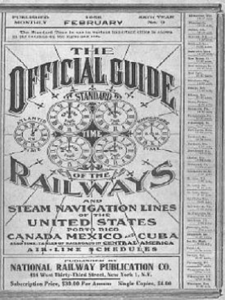 “The Official Guide was the primary reference used by ticket agents for all railroads in the U.S. and Canada, and for international rail travel to Mexico. The Guide was especially useful for constructing connections among the many railroads of the time. The Official Guide, published monthly, also included some high priority freight schedules, system maps, listing of company officers, an index of all railroad stations, industry news briefs and personnel changes, rosters of key railroad officials, and new passenger train announcements, along with steamship schedules. Ticket-sellers like the one in the story below relied on the Guide, a large book a couple inches thick. You’ll soon see why.”
“The Official Guide was the primary reference used by ticket agents for all railroads in the U.S. and Canada, and for international rail travel to Mexico. The Guide was especially useful for constructing connections among the many railroads of the time. The Official Guide, published monthly, also included some high priority freight schedules, system maps, listing of company officers, an index of all railroad stations, industry news briefs and personnel changes, rosters of key railroad officials, and new passenger train announcements, along with steamship schedules. Ticket-sellers like the one in the story below relied on the Guide, a large book a couple inches thick. You’ll soon see why.”
“I’d like a one-way ticket to Davis, please.” The prospective passenger at the Chicago Union Station thought that his request was reasonable enough and quite clear, so he wasn’t prepared for the somewhat agonized look on the ticket-sellers face. “Davis? I’m sorry, sir, but you’ll have to be more specific. There are 18 railway stations names Davis in the United States.” “Really? Well, I want to go to Davis, Illinois.” The ticket clerk sighed deeply. “I’m sorry to trouble you again, sir, but there are four railway stations names Davis in Illinois.”
It was the passenger’s turn to look puzzled, but he came through bravely. “I want the Davis, Illinois, on the Gulf, Mobile & Ohio. Is that sufficiently clear?”
“In a way, sir, it is,” the ticket clerk answered wearily. “You see, there are two Davises in Illinois on the GM&O. One of them is in Alexander County and the other is in Morgan County.”
This is of course, a somewhat exaggerated situation, but what if the passenger had wanted to go to Summit! Wherever there was a grade of any magnitude, the officers of the railroad called the station at the top: Summit. There were 71 different railway stations names Summit in the U.S., Canada, Mexico and the Canal Zone. The photo is the complete story by Charles Layng as published in TRAINS Magazine of May 1952, nearing the end of the heyday of rail travel. A good read. (You may need to creatively enlarge the attachment)
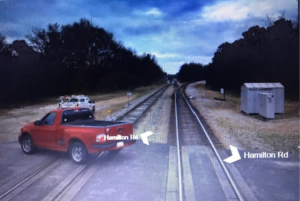 My first real job out of college was with the Boy Scouts of America. Yes, I was a professional scout. Now get the images of being paid to camp out, go to pinewood derby races, and start fires with two sticks out of your minds. Professional scouting takes on a whole different set of activities, mostly servicing existing scout groups or units, starting new units, and raising money. As I stared at these empty text boxes on my computer thinking about what to write, it came to me that those brief years of my BSA experience contained a lot of good railroad memories.
My first real job out of college was with the Boy Scouts of America. Yes, I was a professional scout. Now get the images of being paid to camp out, go to pinewood derby races, and start fires with two sticks out of your minds. Professional scouting takes on a whole different set of activities, mostly servicing existing scout groups or units, starting new units, and raising money. As I stared at these empty text boxes on my computer thinking about what to write, it came to me that those brief years of my BSA experience contained a lot of good railroad memories.
I arrived in LaGrange, GA, in the spring of 1988 – 25 years old, single, no mortgage, and about 60 lbs. lighter than present. I had to cover two counties, Troup and Franklin, in west-central GA. Actually, I was almost as west as you can go in GA. Fishing was great on West Point Lake. LaGrange was the intersecting point of the former Atlanta & West Point RR’s line from Montgomery, AL to Atlanta, and former Seaboard Coastline’s (I think former ACL) route between Waycross, GA, and Birmingham, AL. I also had to make weekly trips to Columbus, GA, where are council office was located. This brought me alongside the former Southern branch to Pine Mountain, GA (Callaway Gardens), and it origin at Columbus and Southern’s line from Columbus to Birmingham.
Unfortunately, CSX had just completed some re-routing of their inherited lines. The Seaboard rose on a steady grade coming in on the east side of town and flew over the A&WP via a plate girder bridge, still in place when I arrived but without rails. The two lines shared an interchange yard on the east side near this location which was mostly empty with the exception of a few cars for local delivery to lumber outlets and textile giant Milliken Mills. Today, it’s completely gone and a wye has been installed between inbound tracks. The railroads once ran side by side through town, but now join as one on the west then separate on the east.
Now, what this created was a fantastic bottle neck for train watching. In great CSX fashion, the two roads joined on each side of town, but then entered a double main through high-speed switches (two motors to throw the points). Often, we could see two to four trains from one point. I often enjoyed pacing a 60 mph sand train heading north out of LaGrange toward Atlanta.
My regret is that cameras where not as readily available as they are these days. So, I have almost no pictorial recollections of all this fun I crammed in about 24 months of my young days. Below is a screen shot from an online street view app. Hasn’t changed much except CSX finally came around and extended the 2nd main past the west/south split to avoid the bottle necking. It used to be located behind the camera, just beyond the street crossing.
Many of you have experienced the recent up-tick in our “holy train nights”. Honestly, I felt our chapter took a little dip in enthusiasm for a while, but I just left Keith Kittinger’s man cave over on Plainview Dr, and when I walked in, I was a bit taken by the number of people milling around, having conversations in small groups, and eating peanuts! The room had a great positive energy I enjoyed being in.
Every group or organization goes through hills and valleys – it’s a human dynamic no one can absolutely put their finger on. We just know it happens.
Our success is due to a few ingredients: 1. We have common interests. 2. Within that interest spectrum, we all have our different niches which provides some variety and makes us a bit interdependent – some know electronics, some know carpentry, some know painting, some know track-work, etc. 3. Most of us enjoy fellowship with one another which is probably the most important. But, I don’t think any of these ingredients would stand on their own.
I learned the term symbiotic by watch Star Wars movies since 1977. The term refers to the belief that living things survive by sharing life from common sources. It’s a little abstract for this article, but the older I get, the more it makes sense to me. I think our chapter lives that kind of life, good or bad. The life of the group varies with the health, contributions, and vitality of its members.
So, I think we’re on an upswing as I’ve witnessed a couple of these gatherings outside the monthly formal meetings. I see good relationships, and enjoyment every time. Just look at the pictures president Ricky sent me…
Somehow, Keith managed to get into every shot!
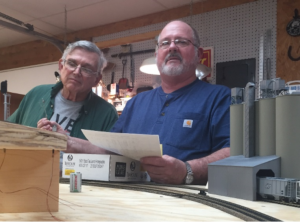
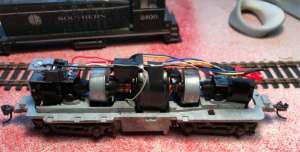 Opinions and Stories by Bill Thomas, Editor
Opinions and Stories by Bill Thomas, Editor
Thanks to my wife Angela, I have been given access to the former screened-in porch that I enclosed several years ago so our young boys could have a play room. Well, play has evolved into video games and electric guitars in their bedroom. The room has served mainly as a cat litter box facility and a place for my backyard container plants to find refuge in the winter.
Upon receiving home dispatcher permission to enter the block, I quickly set up a 6-foot plastic folding table for a temporary work space. Soon I was installing digital decoders in several of my locomotives which have been in storage for years – some for decades. My soldering skills were revived as was my excitement of being able to “run” a train somewhere again in HO scale.
Here’s my “point” for this month’s article. The thought of moving these blue (Athern) and yellow box (Atlas) older locomotives into the digital command control (DCC) ages was daunting – but I’m a persistent man. Overhearing sidebar talk at meetings about DCC from our own Steve Miller and Keith Kittinger, I knew from where my help would come. And sure enough, I’m about to install my 5th and 6th decoders as I write.
My next step was to begin preparations for painting some of my “foreign road” equipment to bring them into the L&N/Family Lines clan I have envisioned in the years 1970-1985ish. Some train smack talk with Keith, Tony Clark, and former chapter member Bill Heaton, put me on track and today I bought my first 3 bottles of paint for the air brush I’ve never had out of the box.
All this to say that one of the most valuable elements of being in a club, historical society chapter, or other organization of like-minded people, is the range and volume of helpful information and pure “assistance” and encouragement that can come from friends who have already tread the path before you. Keeping us from making some of the mistakes they might have made along the way.
So, with a grateful heart, I say, “Thanks!” to those who continue to work, play, and strive to increase the quality of our experience together. Keep up the good work. I hope to pass the favor on to someone new down the tracks.













